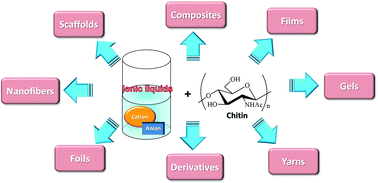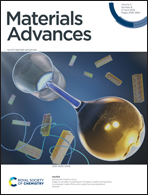Application of ionic liquids for the functional materialization of chitin
Abstract
Ionic liquids (ILs) have been shown to efficiently dissolve substrates with poor solubility. In particular, they act as powerful solvents for structural polysaccharides, which are difficult to dissolve using conventional solvents. Chitin is a representative structural polysaccharide and an important biomass resource because of its large annual production in nature. However, it is mostly unutilized owing its poor solubility and processability. Since 2008, some ILs, such as imidazolium carboxylates and 1-allyl-3-methylimidazolium bromide (AMIMBr), have been found to dissolve chitin. This perspective article overviews the applicability of these ILs for the functional materialization of chitin, for example, the fabrication of gels, films, and composites, through its dissolution in ILs. Bottom-up self-assembly processes from solutions and gels with ILs, that is, regeneration and electrospinning methods, for the fabrication of chitin nanofibers are also presented. Moreover, AMIMBr is shown to act as a reaction medium for chitin acylation. The resulting derivatives are subsequently used for graft polymerization to provide additional functions to chitin, such as thermoplasticity.

- This article is part of the themed collection: Recent Review Articles


 Please wait while we load your content...
Please wait while we load your content...